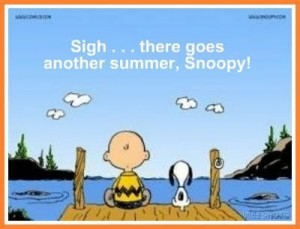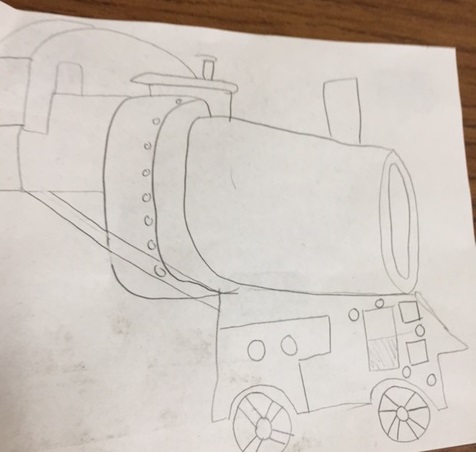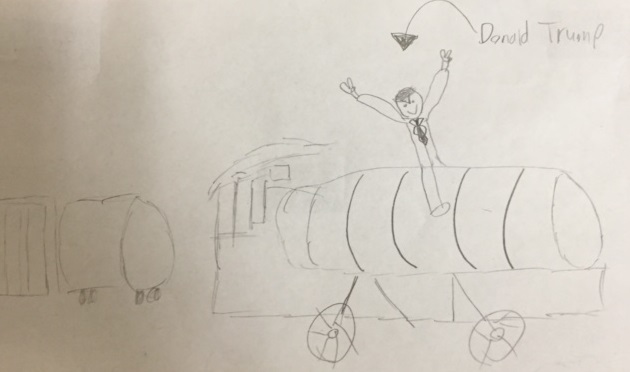
You know that feeling – the summer is quickly winding down; the peaceful time with family and friends is replaced with the anxiety and uneasiness of a new school year. Perhaps you’re not worrying because you have a routine; you have a go-to plan that has worked for years. Perhaps you do not worry because the start of the school year is as simple as assigning seats, a quick welcome, and going over the syllabus.
Being the fourth year of my teaching career, I have not really developed any tried and true methods, and I am not a big fan of imposing rules and expectations on the kids right off the bat. Instead, my planning stemmed from something Dan Meyer said to me when I asked him how to get a group of kids so engaged and thinking critically:
The way your students think and talk about math on the first day of school doesn’t imply they will need to think and talk about it the same way in April or May.
Just like the growth mindset for individuals, a classroom and a group of students as an entity can be developed over time. Recognizing the ideal class will never be handed to me on the first day of school I decided to ask the question – how do I help students take the first step?
ACTIVITY ONE – How do I get students to collaborate about math in a meaningful way?
- Make sure you have students sitting in groups. If you want students to collaborate you need a environment conducive to doing so.
2. Hand out a piece of paper to each student and tell them:
“Today we are going to practice being artists! How many of you feel like you are decent artists?” (take a show of hands)
“How many of you feel like you’re definitely not artists?” (again a show of hands)
“I need you to get out a pencil. In a second I am going to put up the picture that I need you to draw” (don’t start with the picture on the screen because their reaction is hilarious when you show them).
“You will spend three minutes drawing an image to the best of your ability. It does not need to be perfect, but I want you to do your very best“
This is a perfect activity for the first day because they will still do almost anything you ask! Mostly they’re confused why we are drawing in math class.
3. Throw this image on your screen and tell them “Ready, go!”
- Here’s a link to the larger image: Train Pic

- There most likely will be an uproar because many of the students are having a panic attack. Just remind them “I won’t let you fail. I just want you to do your best”
4. Give students students about a minute to draw, circling the room saying “I’m seeing some awesome works! Keep it up!” After a minute tell the kids to put down their pencils. “I want you to grab your paper with your left hand [pause and demonstrate it for the kids] and pass it to the person on your left. You should now have a new image in front of you. I want you to keep going where the last person left off. Go!”
- An interesting thing happens at this point. The students have met their first struggle of the year. They are forced to deal with someone else’s work – maybe good, maybe bad. Either way, they are forced to look at a situation in sometimes a very different way than they approached it. Doesn’t this sound exactly like what we want from students in a classroom?
- After the initial struggle of trying to figure out someone else’s drawing you see students…collaborating! They are asking the person before them how they started or sometimes what they were looking at. One student grabbed their partner’s paper and started drawing but after a few seconds the partner reached over and rotated the paper 180 degrees saying “you should probably look at it this way”.
5. Repeat this process giving students 45 – 60 seconds to draw before switching again.
- I had groups of four so I gave students about 60 seconds, then 45, 45, and 45. Not only do you end up with collaboration; students are able to flex their creativity as well!
6. After the activity take the time to reflect on the important lessons.
A. Did you notice…
- Point out the use of collaboration to make sense of the first person’s drawing.
- Tell them about other observations you made while they were working.
B. Why did that happen?
- Ask the students why they felt the need to collaborate.
C. Does it happen in life or does it happen at home?
- Ask students to tie the drawing activity to life. Make sure you give them time to think, and let them come up with the answers.
D. How can we use this?
- What does this look like in a classroom? What is the value of collaboration?
ACTIVITY TWO
- Have students flip the page over and assign partners. Students need to choose who is person A and who is person B.
2. Explain to them they will only need one pencil and one piece of paper. Person A will be in charge of the pencil and person B will be in charge of the paper.
- Tell the students:
“Person A, your task is easy; all you are allowed to do is put the pencil to the page or lift it up. Person B, you will be in charge of the telling them when to lift the pencil up and when to put it down. Person B, you are also in charge of the paper. You will be drawing an image by moving the paper below the pencil. In a second, I am going to tell person B what you will be drawing; person A, I’m going to ask you to close your eyes.
- Like anytime you give directions, you probably want to go through these directions two more times so everyone is on the same page. If you have the time to model it for the students, that usually helps too.
3. Tell person A to cover their eyes, then on the board write the word – CAR – then immediately erase it. Give students 2 or 3 minutes to complete the task.

- Some students struggle with the idea that they are completely in charge (person B) and some students are frustrated by not having any idea of what the end result will be (person A). What happens though, is a cooperation between the two partners to overcome a challenge. By keeping the image simple and fairly vague it impossible for students to fail. Use this activity to talk with students about overcoming challenges and developing strategies. In fact, laugh will the students about their struggles.
4. After the activity take the time to reflect on the important lessons.
A. Did you notice…
B. Why did that happen?
C. Does it happen in life or does it happen at home?
D. How can we use this?
These activities did more to set up a positive and collaborative environment than I could have hoped. My honors classes use each other as resources to the point where I feel like I’m not needed! It allows me to rethink how I am utilized in the classroom and focus more time on students that need more one on one help. My regular classes for the first time are actually talking! I’ve always preached collaboration with little to no success, but now I have students comparing answers and going to each other for help. By no means is it the perfect environment, but like Dan Meyer said, the students in October still have six months to get there.
These ideas are not completely my own. Each of them were developed from the Link Crew mentality – one that encourages learning through activities, then having discussion about how the activity ties to real life. This is the book that contained these ideas. I encourage you to buy it if you’re looking for ways to spice up your classroom.


